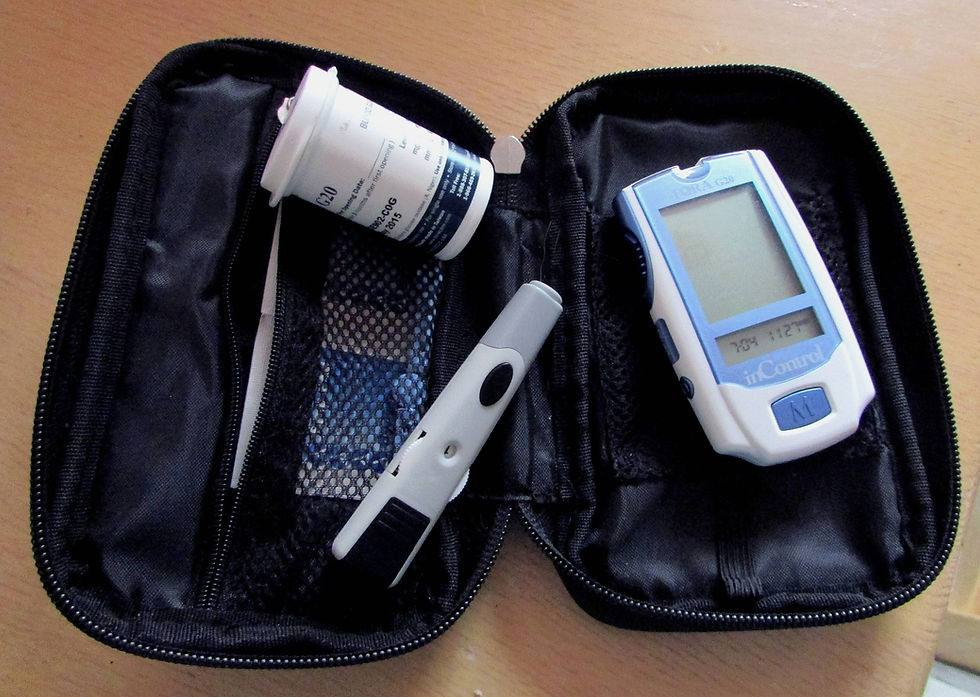Intermittent Fasting - Impact on Body Fat and most specifically visceral fat
- 6D Living

- Aug 18, 2023
- 5 min read

When we think of body fat, we each have an image in our minds of what that looks like. Some see a ‘muffin top’ or a ‘beer belly’ while others see ‘pear shapes’ and ‘apples’. That is literally skimming the surface when it comes to fat and its distribution in our bodies. Our fat to muscle ratio and the distribution and classification of that fat depends on many things – from food choices, activity levels and fasting practices to anxiety levels, emotional pressures and environmental stressors – everything plays a role in how we ‘store our reserves’. And how we store them is crucial in attaining optimal health. So, let’s explore the types of fats that our body creates and how our bodies burn (or not!) our excessive fat stores.

Three types of stored fat in our bodies
Subcutaneous fat: Stored underneath the skin
Visceral fat: Stored around our organs
Intramuscular fat: Stored in and around our muscles
It is the subcutaneous fat that we ‘see’ and ‘pinch’, it can also be the most difficult to lose. We tend to store this type of ‘obstinate fat’ in common areas – women generally store their subcutaneous fat around the butt, stomach, thighs and hips while men tend to collect their fat in the chest or lower abdomen areas. That said, no matter where we keep our fat, it is not a welcome guest. Luckily, we know that practicing IF as a lifestyle can help us burn it off more quickly and keep it off permanently.
A little bit about this obstinate fat in our bodies …
It contains a lower ratio of beta adrenoreceptors to alpha adrenoreceptors; hence slow to respond to adrenal hormones, slowing the breakdown of this obstinate fat
Beta adrenoreceptors are the ‘good’ receptors that respond quickly and efficiently to adrenal hormones and burn fat
Alpha adrenoreceptors are the ‘bad’ receptors which do not respond as quickly to adrenal hormones thereby inhibiting the fat burning process
It contains fewer blood vessels, thereby it is slower to metabolize
It is comprised of estrogen sensitive tissue (it contains a large number of estrogen receptors) that accelerates fat storage through the enlargement of adipose tissue
How IF can help in burning Obstinate Fat in our bodies …
It increases our Catecholamine levels (Catecholamines influence lipolysis (fat burning) by stimulating the adrenoreceptors)
It increases abdominal subcutaneous blood flow thereby assisting the Catecholamines to reach deeper into the tissue areas
A bit more about that stubborn fat

In addition to practicing IF, there are a few other guidelines to help us all avoid storing further obstinate fat as well ridding ourselves of the fat we now carry. As fat storage has been linked with insulin sensitivity levels in the body, avoiding processed and refined carbohydrates can go a long way in reversing that sensitivity and allowing our bodies to process natural carbs optimally. Managing your blood glucose and insulin levels is extremely important. Your fasting insulin level should be below 5; blood glucose level below 90 (these are general guideline numbers, please track your own progress and speak with a health care professional to determine your optimal levels).

Another guideline to follow would be to avoid foods with a high estrogenic effect on the body. Eating more organically grown produce can reduce the number of estrogenic substances in your food (pesticides, fertilizers, herbicides, hormones etc.). Alcohol consumption can compromise your liver’s ability to breakdown estrogenic derivatives from our food choices, which then enter our blood stream and can cause bloating and water retention – in addition to the storage of more obstinate fat!
Remember, this is a marathon, not a sprint – health and wellness are part of a life long journey and IF can play a vital role in helping you to achieve a lifetime of optimal health. IF serves as a daily cleansing and rebooting of our bodies’ various life-sustaining systems. In our world today we spend far too much time ‘feeding’ and far too little time ‘resting’. Digestion takes time, time we consistently deny our bodies in order to stay ‘fed’ and satisfied.

It may help to think of your digestive system as a motor – if you never turn it off, it will eventually burn out. By denying the digestive system to complete its cycle, rest and then reboot regularly we keep our ‘feeding motors’ running, we continue to demand the release of further digestive enzymes and we tire other organs by not allowing them time to heal and rest as well – digestion is a multiorgan game after all!
IF is the off switch of sorts. Maybe ‘sleep mode’ (like on a laptop) is a better way to look at it – using stored power (glucose in the liver) instead of input current (food) in order to keep the background functions running.

Every body is different and tracking your own progress with IF will help you gauge your own body’s timings and rhythms. Your own personal tracking will serve you better than any generalized numbers – though these can be helpful as guideposts, your own body will show you its optimal levels as you progress with your IF practice. Remember your body is unique, treat it with respect, understanding and kindness. Practicing IF as a lifestyle can help keep our body machines running smoothly and efficiently – enjoy the journey!

Always remember ...
A key component to successful IF is your nutrition during your feeding window. Be sure to focus on nutrient dense foods to ensure your body receives the vitamins and minerals it needs to perform optimally.
Remember – IF is a lifestyle choice, one that can be practiced each and every day of your life. Explore the IF options and find the one that fits best into your schedule and preferences.
Keep at it … it has taken some time for your body to learn its current feeding schedule, allow it time to adjust to a new schedule now so that you can fully reap the health benefits of IF.
IF is a way of eating that employs a fasting window of 24 hours or less. IF has been used to facilitate weight loss, build lean muscle mass, improve digestion, decrease inflammation throughout the body as well as to increase energy levels.

IF is a way of life, not a diet. Our bodies are designed to fast and feed in regular cycles – our first meal of the day is after all called BreakFast!
We are all very good at the feeding part but we miss the opportunity to take full advantage of the fasting part. During fasting hours, our bodies continue working and when not overwhelmed with the work of digesting food, our bodies can focus on repairing cells, healing illness as well as detoxifying our blood.
Employing IF as a lifestyle choice facilitates our physiological organism to function at a more optimal frequency, thereby impacting our health and well-being in a plethora of ways – from digestive health to emotional balance, it all begins (and ends!) in the gastrointestinal track.




Comments